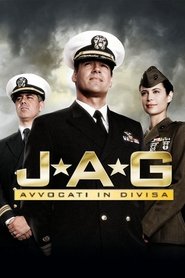Several episodes are set aboard the U.S.S. America (CV-66), a Kitty Hawk-class supercarrier. Launched on February 1, 1964 and decommissioned on August 9, 1996 the America was 83,573 tons displacement, 990 feet in length and 248 feet wide. Over the course of her service the America took part in a number of critical situations and saw combat several times as well. She was present during the events that led up to the conflict between Israel and Egypt in 1967 known as the Six Day War, including responding to the accidental Israeli attack on the U.S.S. Liberty, a Navy research vessel attacked by Israel torpedo bombers that mistook it for an Egyptian cargo vessel. During the Vietnam War the America was deployed three times between 1968 and 1972, seeing combat during each deployment. In 1975 the America was part of NATO peacekeeping forces sent to monitor Soviet fleet movements during the outbreak of the Lebanese Civil War in 1975, she was sent back to the region again in 1986 to evacuate American citizens from Libya following an outbreak of war in the country. The America was part of the strike group that retaliated against Libya after they launched unprovoked missile attacks against American planes flying in international air space. In April of 1986 a bomb planted on a Trans World Airlines (TWA) flight en route to Athens from Rome killed four U.S. citizens, Libya was responsible for the bombing, a few days later a bomb in West Germany killed two U.S. serviceman and the leader of Libya threatened to kill more American troops. President Regan ordered the carrier group that the America was part of to carry out airstrikes against Libyan military targets as a show of force and to send a message that terrorism would not be tolerated. The America's final combat deployment was in December of 1990, she was part of the carrier strike group sent to the Persian Gulf as part of Operation Desert Storm following Iraq's invasion of Kuwait, she participated in a number of airstrikes that took out Scud missile launchers and Iraq Republican Guard bases. Three weeks into the war the America was part of the battle group that attacked and sank an Iraqi gunboat after it fired on a squad of F-14's, she also launched an air strike and destroyed a Silkworm anti-ship missile battery that fired a missile at the U.S.S. Missouri causing minor damage to the battleship. Upon the end of the war America departed the gulf having conducted 3,008 combat sorties, dropping 2,000 tons of ordinance and suffering zero aircraft losses, she was also awarded three Navy Unit Commendations. On September 12, 1994 the America was deployed to Haiti, along with the U.S.S. Dwight Eisenhower, as part of Operation Upholding Democracy. The carriers mission was a rather unique one, instead of fighters and bombers both carriers were loaded with Army helicopters and Army Infantry who were being deployed to help restore Haiti's democratic government after it was overthrown by a coup lead by a military dictator. The America's final deployment was on August 28, 1995, her 20th deployment in her distinguished 30 years of service, she was once again sent back to the Mediterranean region to take part in Operation Deny Flight, a NATO operation to enforce the no-fly zones over Bosnia during their civil war, her final deployment was routine and without incident. After being decommissioned the America had one final and unique honor: instead of being scrapped she was used as the target of a live-fire exercise, the first one to be done with an aircraft carrier, the purpose was to pinpoint weaknesses and vulnerabilities of an aircraft carrier to underwater attacks, namely torpedoes, which would be used to aid the design of future aircraft carriers. Over the course of 25 days the Navy watched and collected data while the America was hit by both torpedoes and Harpoon anti-ship missiles, the ship proved to be very tough indeed as when the live-fire tests were done the America was still afloat, although had taken on a lot of water. After the tests were finished America was sunk by a controlled scuttling on May 14, 2005, being the first warship of her class to be studied and intentionally sunk. Sailors that had served on the ship objected to a ship named after the country, one that had a long and distinguished service history, being intentionally sunk instead of being made into a museum ship. In response then-Vice Chief of Naval Operations Admiral John B. Nathman explained: "America will make one final and vital contribution to our national defense, this time as a live-fire test and evaluation platform. America's legacy will serve as a footprint in the design of future carriers - ships that will protect the sons, daughters, grandchildren and great-grandchildren of America veterans."The data and information gathered and learned from the scuttling of the America proved invaluable indeed and was used to design and construct the new Gerald R. Ford-class of aircraft carriers, the most advanced aircraft carrier ever built, this new class will replace the Nimitz-class carriers currently in service, and the lead ship of the class replaced the U.S.S. Enterprise-class supercarrier after she was decommissioned in 2012. The lead ship of the class, the U.S.S. Gerald R. Ford, was launched on October 11, 2013, at 1,106 feet in length and 100,000 tons displacement she is the largest aircraft carrier ever built and the largest warship in the world in terms of displacement.
Scritto da il
05-03-2025 alle ore 07:55
Immagini
Nessun dato in archivio
Consiglia
Voto
Nessun dato in archivio
Commenti
Nessun dato in archivio
SerieTv
Nessun dato in archivio
